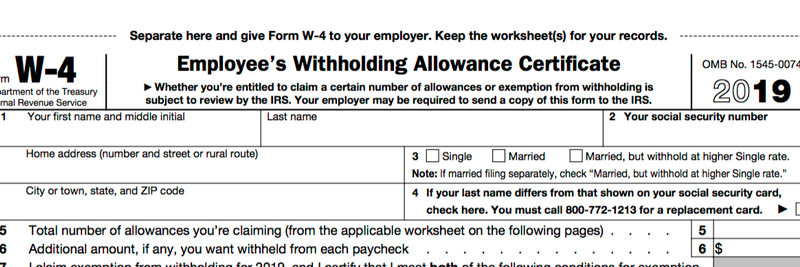2018 Tax Filing Data Shows Need To Review Withholding
The IRS continues to encourage taxpayers to review the amount of tax they have withheld to avoid an unexpected tax surprise when they file their 2019 tax returns next year. Preliminary 2018 tax filing data seems to show the need for taxpayers to review their withholding in order to make sure the appropriate amount of tax is being withheld from their paychecks to reflect recent tax law changes.
Tax Cuts and Jobs Act
The Tax Cuts and Jobs Act made significant changes to the tax code, and 2018 was the first time that taxpayers filed with the new rules. Among other changes, the legislation modified individual income tax rates and brackets, eliminated the personal and dependency exemptions, raised the standard deduction amounts, limited certain itemized deductions (including the deduction for state and local taxes), increased the child tax credit and its phaseout thresholds, added a credit for other dependents, and increased the alternative minimum tax exemption amounts and the exemption phaseout thresholds.
2018 tax filing statistics
Preliminary data for the 2018 tax year shows that more than 106 million federal income tax individual returns resulted in refunds, with an average refund of $2,879. Over 24 million individual returns showed tax due at the time of filing, averaging $5,160.* Because of the difficulty many taxpayers seemed to have with their 2018 tax year withholding (some may not have realized changes were needed), the IRS waived certain penalties for many 2018 tax returns. It is important that you get withholding right for 2019 while there still may be time for any adjustments to take effect.
Getting it right
If you have too much tax withheld, you will receive a refund when you file your tax return, but it might make more sense to reduce your withholding and receive more in your paycheck. If you have too little tax withheld, you will owe tax when you file your tax return, and you might owe a penalty. You can generally change the amount of federal tax you have withheld from your paycheck by giving a new Form W-4 to your employer. You can use a number of worksheets for the Form W-4 or the IRS Withholding Calculator (available at irs.gov) to help you plan your tax withholding strategy.
If changes reduce the number of allowances you are permitted to claim or your marital status changes from married to single, you must give your employer a new Form W-4 within 10 days. You can generally submit a new Form W-4 whenever you wish to change your withholding allowances for any other reason.
In general, you can claim various withholding allowances on the Form W-4 based on your tax filing status and the tax credits, itemized deductions (or any additional standard deduction for age or blindness), and adjustments to income that you expect to claim. You might increase the tax withheld or claim fewer allowances if you have a large amount of nonwage income. (If you have a significant amount of nonwage income, you might also consider making estimated tax payments using IRS Form 1040-ES.) The amount withheld can also be adjusted to reflect that you have more than one job at a time and whether both you and your spouse work. You might reduce the amount of tax withheld by increasing the amount of allowances you claim (to the extent permissible) on Form W-4.
You can claim exemption from withholding for the current year if: (1) for the prior year, you were entitled to a refund of all federal income tax withheld because you had no tax liability; and (2) for the current year, you expect a refund of all federal income tax withheld because you expect to have no tax liability.
If you need help, talk to a tax professional about your individual situation.
*Internal Revenue Service, 2019
Prepared by Broadridge Investor Communication Solutions, Inc. Copyright 2019.



